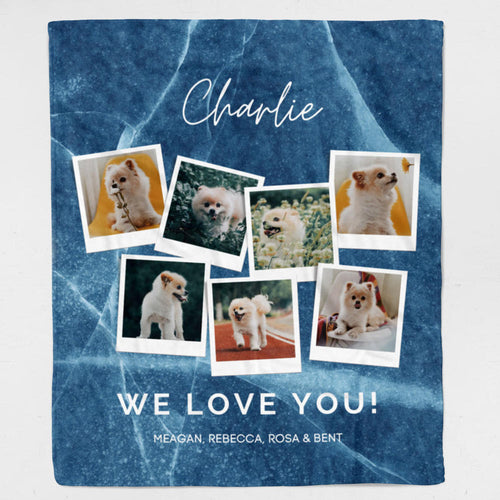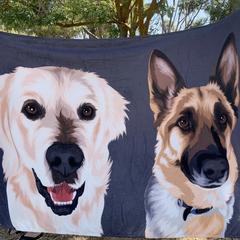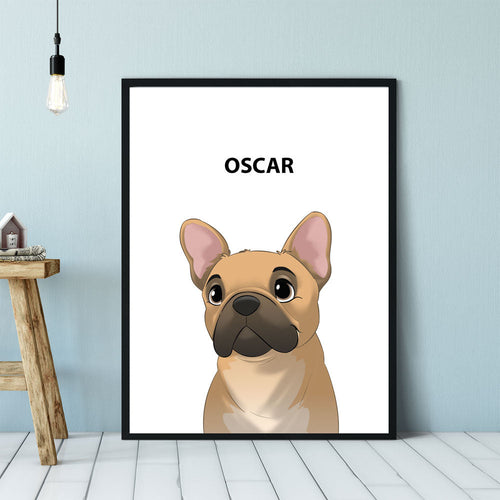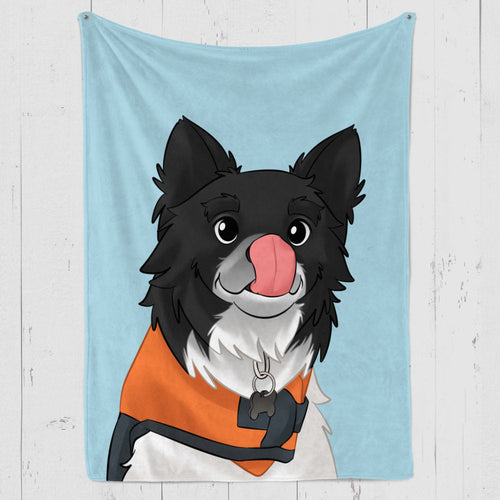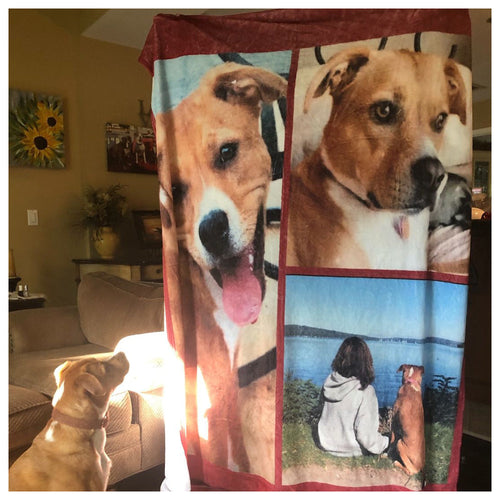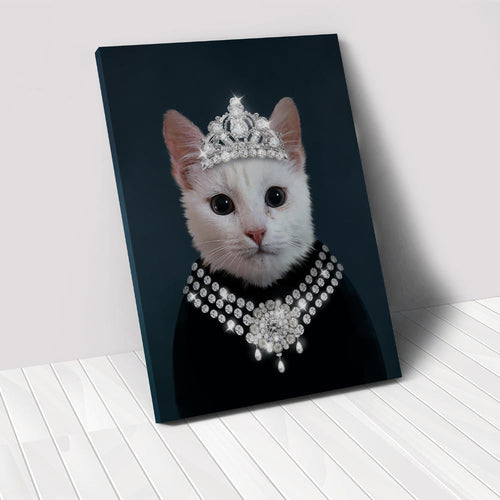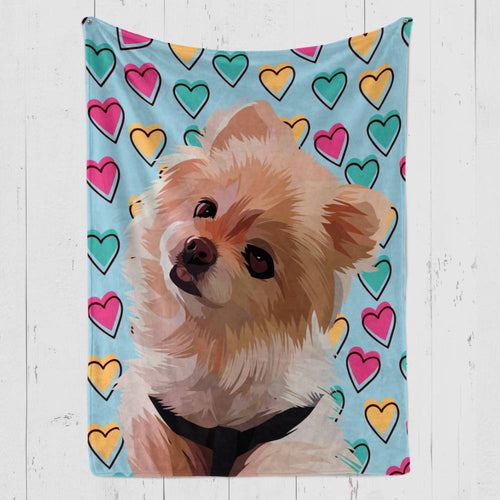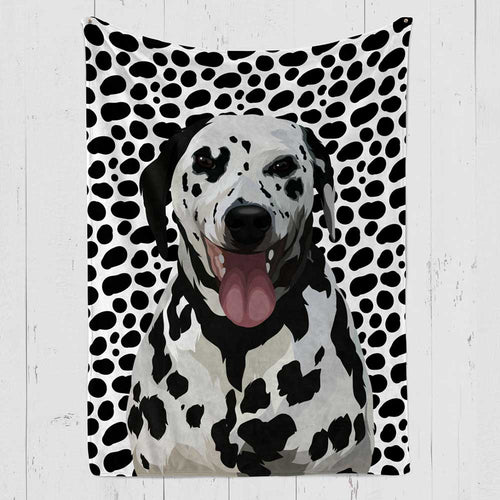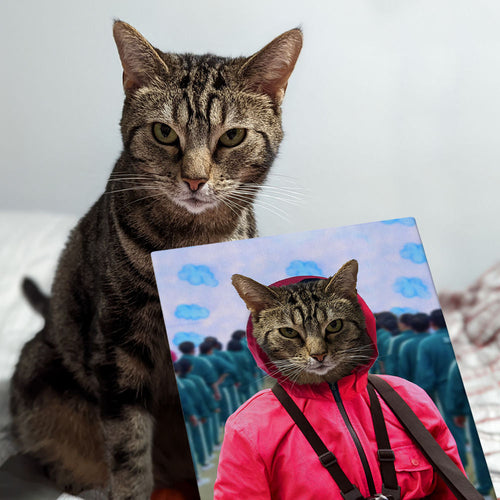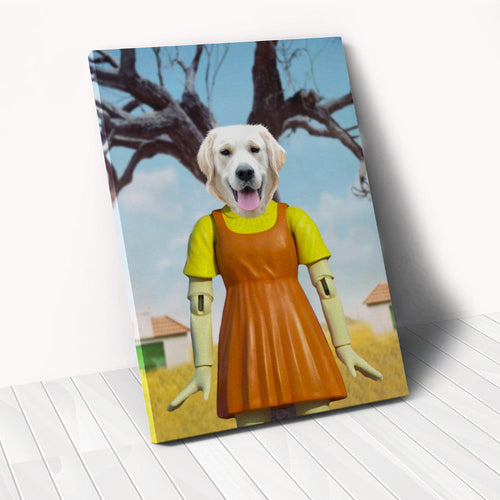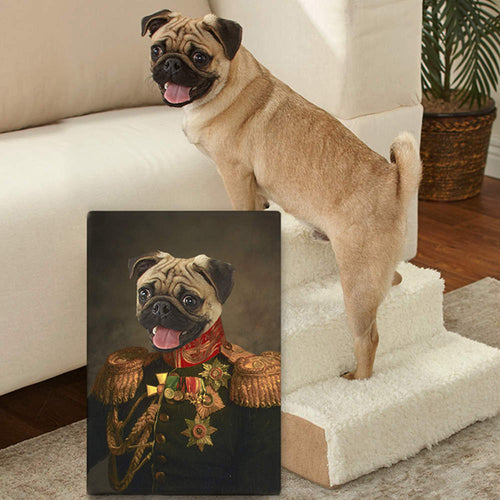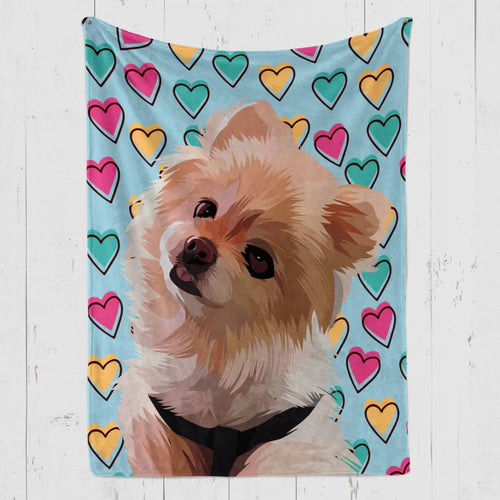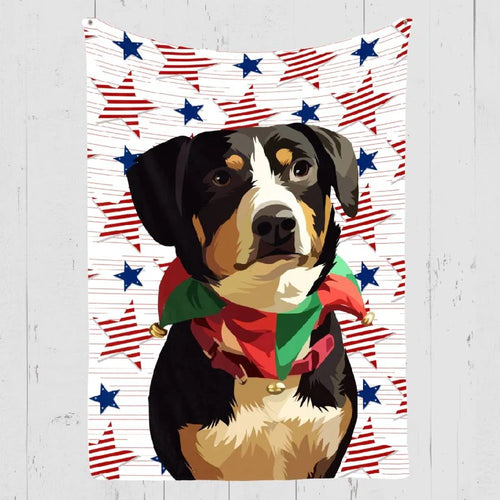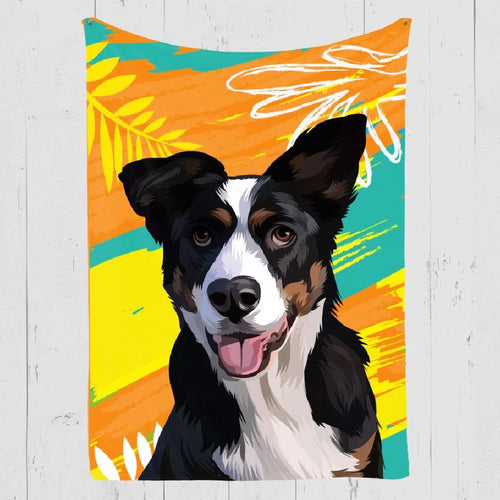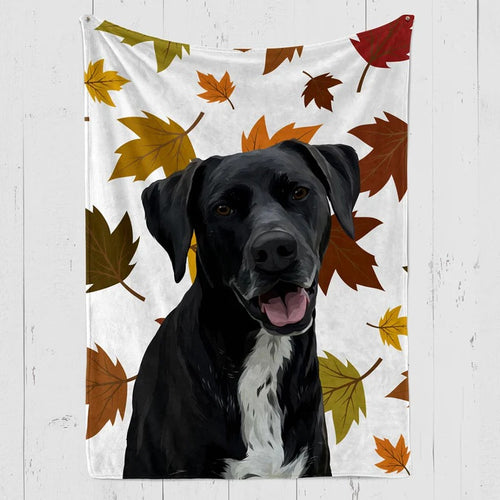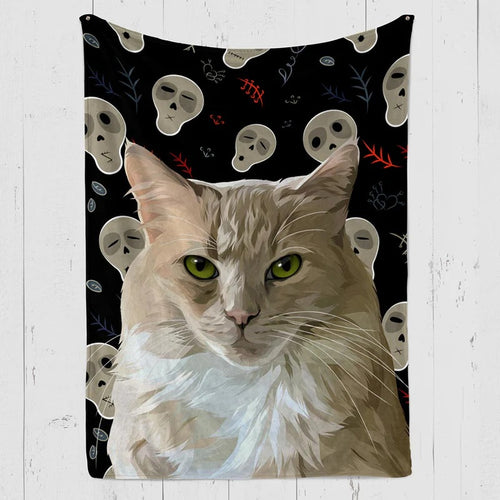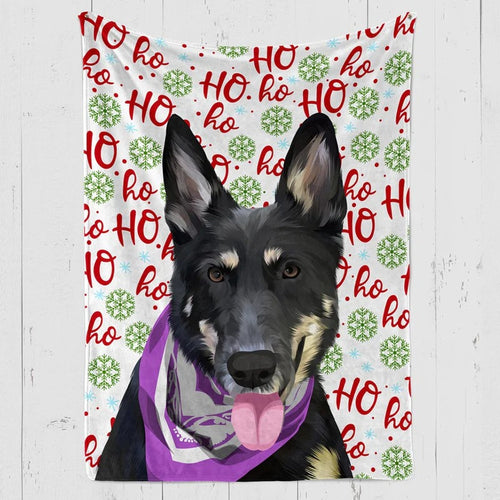
Dogs usually have dewclaws on their hind legs or front legs or on both. However, not all the dogs have dewclaws on their rear feet. These claws are fully-developed toes and are considered the evolutionary equivalent of the thumbs of dog paws and are present on a little higher position than the four toes.
The presence or absence of dewclaws differs depending on the breed and it is essentially genetic. It can also be removed. Dewclaws help the dog to climb, scratch, grasp, and do other tasks. It helps them get extra grip or traction on rough terrain or slippery surfaces. You will also see double dewclaws on the hind legs of the guarding and herding breeds.
The section below will introduce you to the list of dog breeds with rear dewclaws and how they influence the agility, health, and appearance of the pet.
What Dog Breeds have back Dewclaws?
Mentioned below are the dog breeds that have dewclaws on hind legs.
1. Great Pyrenees

Great Pyrenees, also known as Pyrenean mountain dogs, have dewclaws on both their front and hind legs and the one which is present on the hind leg is non-functional. The pet owner must be prompt with monitoring and taking care of the hind dewclaws.
If proper care is not taken, the extra digit can become painful and can result in infection. As they have double dewclaws, they are polydactyl. Dewclaws help this breed navigate through rough terrain, evade predators, make sharp turns, get a grip on ice, and chase prey.
- Group: Working group
- Height: female: 25 to 29 inches and male: 27 to 32 inches
- Weight: female: 85 to 100 pounds and male: 100 to 120 pounds
- Energy Level: Moderate
- Physical Characteristics: double-coated, muscular, brown eyes
- Lifespan: 10 to 12 years
- Color: Solid white, tan or gray, white with pale yellow patches, reddish brown
- Shedding: average to high shedders
- Bark: Deep and booming barkers
2. Anatolian Shepherds

Even the Anatolian Shepherd has a double pair of rear dewclaws. These giant pooches, also known as the Turkish mountain dog, are one of the ancient breeds and are great with children and other animals. They have less drive to attack prey. Besides, they are very protective and loyal to their owners.
Anatolian Shepherds are known for their agility and strength. As they are very active, owners must inspect and trim the back dewclaws periodically to prevent them from getting injured. Having a clean and well-maintained dewclaw will keep the pooch healthy and safe.
- Group: Working group
- Height: 27 to 19 inches
- Weight: female: 80 to 120 pounds and male: 110 to 150 pounds
- Energy Level: Moderate
- Physical Characteristics: Profusely muscled, droopy ears, brown or black nose, long and high-set tail with a curl at the end
- Lifespan: 11 to 13 years
- Color: Brindle, white, blue fawn, white and biscuit, red fawn
- Shedding: Sheds heavily twice a year (seasonal shedders)
- Bark: Barks when anxious or perceives any threat
3. Saint Bernard

Saint Bernard is one such breed that has dewclaws on both the front and the back legs. This furry baby is extremely gentle and intelligent and is genetically predisposed to have rear dewclaws. Saint Bernard are popular as mountain rescue dogs. They help in rescuing and searching travelers stuck in the fall foul of avalanches, treacherous mountain passes, or snowy slopes.
Saint Bernard are the genial giants of the Swiss Alps and their hind dewclaws help them gain stability while they are walking on uneven or rugged terrain. They are patient companions and are great with children. Besides, Saint Bernards have a distinctively friendly expression and are known for their hospitable nature.
- Group: Working dog
- Height: female: 26 to 28 inches and male: 28 to 30 inches
- Weight: female: 120 to 140 pounds and male: 140 to 180 pounds
- Energy Level: Moderate
- Physical Characteristics: muscular, deep-set eyes, broad head, short muzzle, wrinkled brow, floppy ears
- Lifespan: 8 to 10 years
- Color: Orange and white, brown and white, brindle grizzle, mahogany, reddish-brown brindle, reddish-brown mantle, etc.
- Shedding: Sheds heavily during autumn and spring season
4. Beauceron

If you are looking for a dog breed that has hind dewclaws, Beauceron is a good choice. This French dog breed has a significant herding role. Even Beauceron are dogs with double dewclaws.
The rear dewclaws in these pooches are present quite lower than the standard position, hence it helps in evenly distributing the dog’s weight. The dewclaws enable them to walk or run over ice or snow with ease. Beaucerons are gentle breeds and they have a lot of stamina. Furthermore, they have a fun-loving attitude and are receptive to the feelings of their owners.
- Group: Herding group
- Height: 24 to 27.5 inches
- Weight: 70 to 110 pounds
- Energy Level: High
- Physical Characteristics: Muscular and rugged, long snout, floppy ears, wider face, straight back, deep chest, well-defined withers
- Lifespan: 10 to 12 years
- Color: Black, tan, harlequin coat is a mix of tan, white/gray, and black, gray black, and tan
- Shedding: Seasonal shedders
- Bark: Low tendency to bark
5. Catalan Sheepdogs

Catalan Sheepdogs are working and herding canines that have double dewclaws. Some Catalan Sheepdogs have dewclaws on all their legs. Besides, giving them traction while running and making sudden turns, their dewclaws help them pull, run, and even dig without losing stability.
While running, these pooches lower their heads and the short feet provide them a better balance. These pooches were bred as working and herding canines and used to safeguard the sheep in the Pyrenean mountain range. These breeds tend to have unique rear dewclaws as the double pairs are often joined together by a membrane.
- Group: Herding dog
- Height: 18 to 22 inches
- Weight: 37 to 55 pounds
- Energy Level: Highly energetic
- Physical Characteristics: Moderately long coat, droopy ears, hairs around beard and eyes, tufted eyebrows, rectilinear outline
- Lifespan: 12 to 14 years
- Color: light/ dark gray, black, fawn, dark sable, tan, white
- Shedding: Moderate shedders
- Bark: Low tendency to bark
6. Dachshunds
Another rear dewclaw dog breed is the Dachshunds. These pooches have dewclaws on the four feet. As per the AKC breed standards, the rear dewclaws in these canines have to be removed soon after their birth to prevent the pooch from getting injured. Removal of the rear dewclaws also helps to maintain healthy feet.
However, the removal of the front leg dewclaws is done at the owner’s or breeder’s discretion. In these pooches, the front dewclaws are functional, however, the rear dewclaws are considered an anomaly. Though they are small in size, they are vivacious hunters.
- Group: Hound Group
- Height: 8 to 9 inches
- Weight: 16 to 32 pounds
- Energy Level: Very energetic
- Physical Characteristics: Long backs, long muzzle, long and droopy ears, long muzzle, short muscular legs
- Lifespan: 12 to 16 years
- Color: Black and tan, chocolate and cream, solid black, blue and tan, black and cream, red, blue dapple, brindle, chocolate dapple, and more
- Shedding: Moderate shedders
- Bark: Loud and frequent barkers
7. Briard

Briards are other breeds that have double dewclaws. The dewclaws were used to chase predators over the rugged landscape. These pooches are called a ‘heart wrapped in fur’. Their impeccable loyalty will melt your heart.
Briards are known for their guarding and dual herding purposes. As per the AKC breeding standard, these furry babies should have a minimum of two dewclaws on their hind legs. You will even see Briards, who have dewclaws on their three legs. The decision to remove the dewclaws rests on the breeder or Briard owner. The removal helps the dog stay safe.
- Group: Herding
- Height: female: 22 to 25 inches and male: 24 to 27 inches
- Weight: female: 50 to 80 pounds and male: 60 to 100 pounds
- Energy Level: Medium to high
- Physical Characteristics: Well-muscled body, high-set and cropped ears, long and rectangular head, deep chest, shaggy coat
- Lifespan: 10 to 12 years
- Color: Black, gray, tawny, white, honey color, blue or fawn
- Shedding: Seasonal shedders
- Bark: Barks when perceives territorial danger, fear, or anger
Briards are other breeds that have double dewclaws. The dewclaws were used to chase predators over the rugged landscape. These pooches are called a ‘heart wrapped in fur’. Their impeccable loyalty will melt your heart.
8. Estrela Mountain Dog

Estrela Mountain Dogs, also known as Portuguese Shepherds, can have single or double dewclaws. They are formidable opponents to predators. It is important to keep their claws periodically clipped as it does not wear down naturally.
It is not very necessary to remove the rear dewclaws of these breeds. Besides being loyal family companions, they keep up to their status of being excellent watchdogs, wary of intruders and strangers. They were bred to keep a watch on the livestock. These pups are highly energetic, intelligent, strong-willed, and independent.
- Group: Mountain dogs
- Height: 24 to 29 inches
- Weight: 77 to 132 pounds
- Energy Level: High
- Physical Characteristics: Long or short coat, oval-shaped eyes, hooked thick tails, muscular and sturdy built
- Lifespan: 10 to 12 years
- Color: brindle, wolf gray, black, muzzle
- Shedding: Sheds heavily twice a year
- Bark: Frequent barker (more during the protection of the territory)
Conclusion
Rear claws are rare to be present in dogs as compared to the front dewclaws. The list of dog breeds with rear dewclaws is varied. Even the purpose of the extra digit also differs in certain breeds. If you are adopting a furry baby with rear dewclaws or double dewclaws, you must ensure they are properly maintained to enhance the pet's safety.
Frequently Asked Questions
Are rear dewclaws common in all dog breeds?
While most of the dogs have front dewclaws, getting breeds with rear dewclaws is comparatively rare.
Do rear dewclaws act as a stabilizer in dogs?
Rear dewclaws act as a stabilizer for the wrist joint of the dog and offer additional traction while the dog is taking sharp turns. Further, it adds stability and grip on slippery or snowy surfaces. It even helps them climb trees and have a grip on objects.
Is it important to give special care or attention to the rear dewclaws?
Yes, rear dewclaws need special care. Dewclaws need to be periodically trimmed. Without proper care and attention, it can become overgrown, split, or pulled off, and can cause injuries or infection.
Can I remove the rear dewclaws of my pooch?
Yes, rear dewclaws can be removed. Even rear dewclaws removal is recommended to prevent unnecessary injuries.
Do certain breeds have rear dewclaws naturally?
Yes, rear dewclaws are considered breed standard in certain breeds like Great Pyrenees, Briards, Anatolian Shepherd, etc.
Are rear dewclaws active in all dogs?
No, rear dewclaws do not have a functional purpose in all dogs that have them, unlike the front dewclaws.
Should pet owners be worried about the health concerns associated with rear dewclaws?
Yes, if the rear dewclaws are not properly monitored and maintained, it can be a cause of health concerns. There can be risks of infections and injuries. Overgrown dewclaws can cause inflammation and sores.
Are rear dewclaws advantageous for some dogs?
Yes, there are advantages to having rear dewclaws in dogs. These extra digits extend added support and grip on slippery surfaces. It corresponds to the human thumb and stabilizes the carpus of the leg touching the ground.
Latest Review on Woof Blankets
To have such a masterpiece by my side every day is a gift for me and my memories with Rex. Thank you WoofBlankets for such an opportunity to recreate his image on a blanket.Lara o’ Miguel US, California
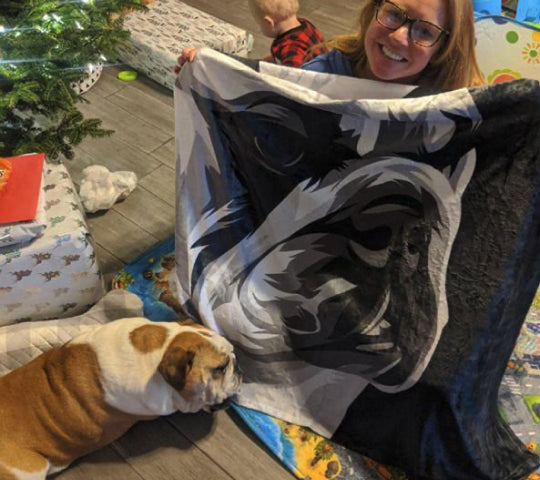
COLLECTION WORTH EVERY PENNY
BEST SELLERS
-
Woofy Single Color Custom Pet Blanket
![Woofy Single Custom Pet Blanket – Woof Blanket]()
- -41%
BlanketsSHOP NOW- Regular price
- from $64.95
- Sale price
- from $64.95
- Regular price
-
$109.95 - Unit price
- per
Sold out -
Exclusive Christmas Custom Pet Blanket
![Exclusive Custom Pet Blanket]()
- -39%
BlanketsSHOP NOW- Regular price
- from $69.95
- Sale price
- from $69.95
- Regular price
-
$114.95 - Unit price
- per
Sold out -
Christmas Custom Pet Blanket
![Christmas Custom Pet Blanket - Custom Dog Blankets]()
- -40%
BlanketsSHOP NOW- Regular price
- from $69.95
- Sale price
- from $69.95
- Regular price
-
$115.95 - Unit price
- per
Sold out -
Watercolor Pet Portraits
![]() SHOP NOW
SHOP NOW- Regular price
- from $59.95
- Sale price
- from $59.95
- Regular price
-
- Unit price
- per
Sold out -
Woofy Christmas Custom Dog Blanket
![Woofy Christmas Custom Dog Blanket]()
- -39%
BlanketsSHOP NOW- Regular price
- from $69.95
- Sale price
- from $69.95
- Regular price
-
$114.95 - Unit price
- per
Sold out -
Modern Pet Owner Portrait
![]()
- -32%
CanvasSHOP NOW- Regular price
- from $84.95
- Sale price
- from $84.95
- Regular price
-
$124.95 - Unit price
- per
Sold out -
Woof Splash Custom Pet Blanket
![Woof Splash Custom Pet Blanket]()
- -39%
BlanketsSHOP NOW- Regular price
- from $69.95
- Sale price
- from $69.95
- Regular price
-
$114.95 - Unit price
- per
Sold out -
The Admiral - Custom Pet Portrait
![The Admiral - Custom Pet Portrait Online]()
- NEW
- -25%
CanvasSHOP NOW- Regular price
- from $59.95
- Sale price
- from $59.95
- Regular price
-
$79.95 - Unit price
- per
Sold out -
Wings of Loyalty - Custom Pet Portrait
![]()
- NEW
CanvasSHOP NOW- Regular price
- from $59.95
- Sale price
- from $59.95
- Regular price
-
- Unit price
- per
Sold out -
Pet Memorial Custom Photo Collage Blanket
![Personalized pet memorial quilt with photos]()
- -41%
BlanketsSHOP NOW- Regular price
- from $64.95
- Sale price
- from $64.95
- Regular price
-
$109.95 - Unit price
- per
Sold out -
Celestial Paws - Custom Pet Portrait
![]() CanvasSHOP NOW
CanvasSHOP NOW- Regular price
- from $59.95
- Sale price
- from $59.95
- Regular price
-
- Unit price
- per
Sold out -
The Loyal Soul - Custom Pet Portrait
![]()
- NEW
SHOP NOW- Regular price
- from $59.95
- Sale price
- from $59.95
- Regular price
-
- Unit price
- per
Sold out -
Cartoonized Pet Portraits (New)
![Cartoonized Pet Custom Portraits Online]()
- -36%
SHOP NOW- Regular price
- from $59.95
- Sale price
- from $59.95
- Regular price
-
$93.95 - Unit price
- per
Sold out -
The French Sailor - Custom Pet Portrait
![]()
- -25%
CanvasSHOP NOW- Regular price
- from $59.95
- Sale price
- from $59.95
- Regular price
-
$79.95 - Unit price
- per
Sold out -
The Policeman - Custom Pet Portrait
![]()
- NEW
- -25%
CanvasSHOP NOW- Regular price
- from $59.95
- Sale price
- from $59.95
- Regular price
-
$79.95 - Unit price
- per
Sold out -
The General - Custom Pet Portrait
![]()
- NEW
- -25%
CanvasSHOP NOW- Regular price
- from $59.95
- Sale price
- from $59.95
- Regular price
-
$79.95 - Unit price
- per
Sold out -
Woof Love Custom Pet Blanket
![Woof Love Custom Pet Blanket]()
- -39%
BlanketsSHOP NOW- Regular price
- from $69.95
- Sale price
- from $69.95
- Regular price
-
$114.95 - Unit price
- per
Sold out -
Summer Time Custom Pet Blanket
![Summer Time Custom Pet Blanket]()
- -39%
BlanketsSHOP NOW- Regular price
- from $69.95
- Sale price
- from $69.95
- Regular price
-
$114.95 - Unit price
- per
Sold out -
The Ambassador - Custom Pet Portrait
![The Ambassador - Custom Pet Portrait Online]()
- NEW
- -25%
CanvasSHOP NOW- Regular price
- from $59.95
- Sale price
- from $59.95
- Regular price
-
$79.95 - Unit price
- per
Sold out -
Fall In Love Custom Pet Blanket
![Fall In Love Custom Dog Blanket]()
- NEW
- -39%
BlanketsSHOP NOW- Regular price
- from $69.95
- Sale price
- from $69.95
- Regular price
-
$114.95 - Unit price
- per
Sold out -
The Classy Lady - Custom Pet Portrait
![The Classy Lady]()
- NEW
- -25%
CanvasSHOP NOW- Regular price
- from $59.95
- Sale price
- from $59.95
- Regular price
-
$79.95 - Unit price
- per
Sold out -
The Duke - Custom Pet Portrait
![The Duke - Custom Pet Portrait]()
- NEW
- -25%
CanvasSHOP NOW- Regular price
- from $59.95
- Sale price
- from $59.95
- Regular price
-
$79.95 - Unit price
- per
Sold out -
Dog In Suit- Custom Pet Portrait
![Dash Dog In Suit- Custom Pet Portrait Online]()
- NEW
- -25%
CanvasSHOP NOW- Regular price
- from $59.95
- Sale price
- from $59.95
- Regular price
-
$79.95 - Unit price
- per
Sold out -
The Princess - Custom Pet Portrait
![]()
- NEW
- -25%
CanvasSHOP NOW- Regular price
- from $59.95
- Sale price
- from $59.95
- Regular price
-
$79.95 - Unit price
- per
Sold out -
Modern Pet Portrait with One Mug
![Modern Pet Portrait with One Mug]()
- -25%
Print MaterialSHOP NOW- Regular price
- from $99.95
- Sale price
- from $99.95
- Regular price
-
$133.95 - Unit price
- per
Sold out -
The Aristocrat - Custom Pet Portrait
![The Aristocrat - Custom Pet Portrait At Best Price]()
- NEW
- -25%
CanvasSHOP NOW- Regular price
- from $59.95
- Sale price
- from $59.95
- Regular price
-
$79.95 - Unit price
- per
Sold out -
Single Color Custom Blanket with 1 Mug
![Single Color Custom Blanket with 1 Mug]() BlanketsSHOP NOW
BlanketsSHOP NOW- Regular price
- from $99.95
- Sale price
- from $99.95
- Regular price
-
- Unit price
- per
Sold out -
Single Color Custom Blanket with 2 Pillows
![Single Color Custom Pet Blanket with 2 Pillows]()
- -21%
BlanketsSHOP NOW- Regular price
- from $99.95
- Sale price
- from $99.95
- Regular price
-
$125.95 - Unit price
- per
Sold out -
The Dog in Suit Custom Pet Mug
![]()
- -20%
MugsSHOP NOW- Regular price
- $39.95
- Sale price
- $39.95
- Regular price
-
$49.95 - Unit price
- per
Sold out -
Angel Custom Pet Mug
![]()
- -20%
MugsSHOP NOW- Regular price
- $39.95
- Sale price
- $39.95
- Regular price
-
$49.95 - Unit price
- per
Sold out -
This Human Belongs To - Custom Pet Mug
![]()
- NEW
- -20%
MugsSHOP NOW- Regular price
- $39.95
- Sale price
- $39.95
- Regular price
-
$49.95 - Unit price
- per
Sold out -
It's Not Dog Hair Custom Pet Mug
![]()
- NEW
- -20%
MugsSHOP NOW- Regular price
- $39.95
- Sale price
- $39.95
- Regular price
-
$49.95 - Unit price
- per
Sold out -
My Dog Is My Valentine Custom Pet Mug
![]()
- NEW
- -20%
MugsSHOP NOW- Regular price
- $39.95
- Sale price
- $39.95
- Regular price
-
$49.95 - Unit price
- per
Sold out -
3 Photos With Message Custom Pet Mug
![]()
- NEW
- -20%
MugsSHOP NOW- Regular price
- $39.95
- Sale price
- $39.95
- Regular price
-
$49.95 - Unit price
- per
Sold out -
My Valentine Has Four Legs- Personalized Mugs
![]()
- NEW
- -20%
MugsSHOP NOW- Regular price
- $39.95
- Sale price
- $39.95
- Regular price
-
$49.95 - Unit price
- per
Sold out -
Dog Mamma Custom Pet Coffee Mug
![]()
- -20%
MugsSHOP NOW- Regular price
- $39.95
- Sale price
- $39.95
- Regular price
-
$49.95 - Unit price
- per
Sold out -
Uncle Sam - Custom Pet Portrait
![]()
- NEW
- -25%
CanvasSHOP NOW- Regular price
- from $59.95
- Sale price
- from $59.95
- Regular price
-
$79.95 - Unit price
- per
Sold out -
The Revolutionary Emperor - Custom Pet Portrait
![]()
- NEW
- -25%
CanvasSHOP NOW- Regular price
- from $59.95
- Sale price
- from $59.95
- Regular price
-
$79.95 - Unit price
- per
Sold out -
The Princess Paws - Custom Pet Portrait
![]()
- -25%
CanvasSHOP NOW- Regular price
- from $59.95
- Sale price
- from $59.95
- Regular price
-
$79.95 - Unit price
- per
Sold out -
The Dark Crusader Knight - Custom Pet Portrait
![]()
- -25%
CanvasSHOP NOW- Regular price
- from $59.95
- Sale price
- from $59.95
- Regular price
-
$79.95 - Unit price
- per
Sold out
